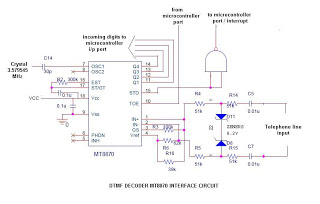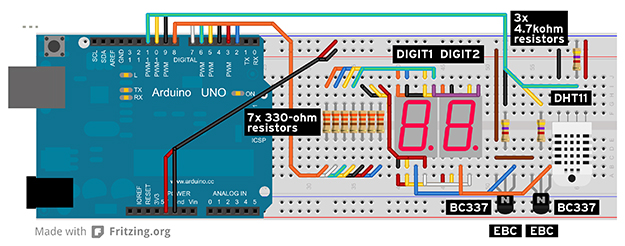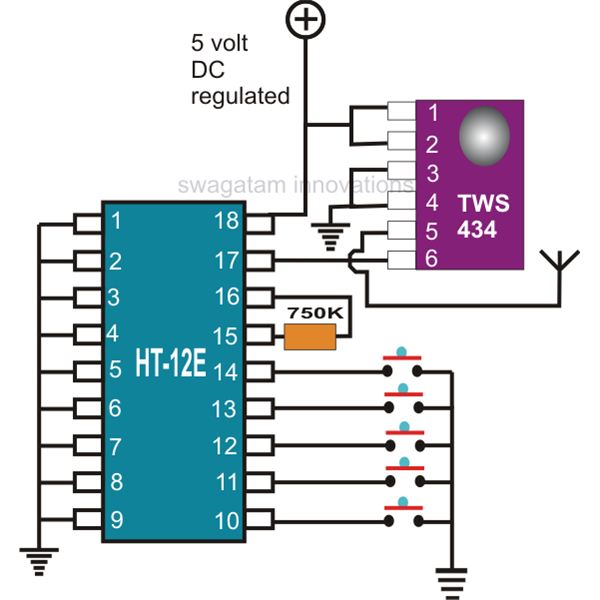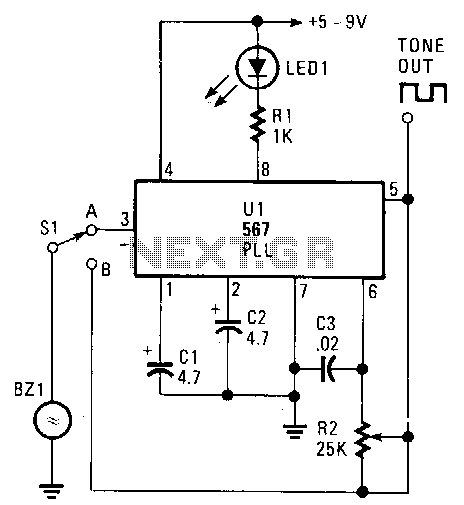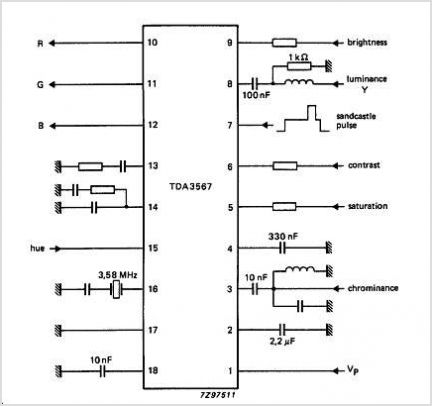
Noaa Weather Alert Decoder
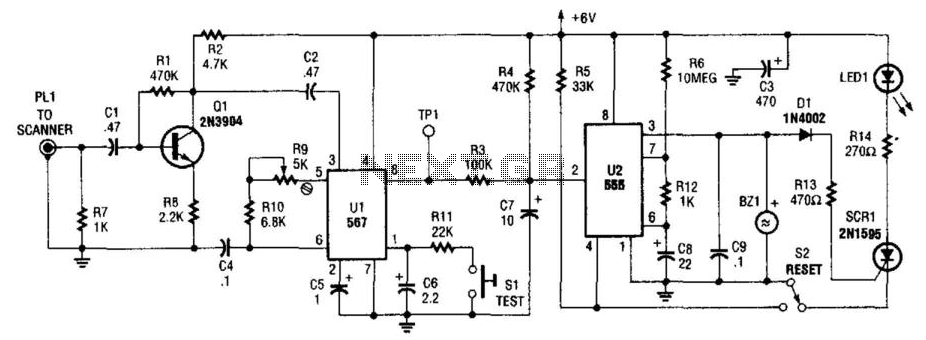
This circuit detects the 1050-Hz tone transmitted by NOAA (National Oceanic and Atmospheric Administration) weather radio stations, which operate within the frequency range of 162.40 to 162.55 MHz. The tone is emitted for several seconds. Q1 functions as an amplifier that drives the tone detector U1, an NE567 integrated circuit, which identifies the tone and outputs a low signal on pin 8. This output is connected to a 555 timer (U3), which generates a high signal on pin 3, activating the buzzer BZ1, triggering SCR1, and illuminating the LED. Switch S2 is utilized to reset the circuit. Audio input is sourced from the receiver associated with the device. Switch S1 is employed for testing the device, and it will activate the alarm within two seconds if the system is functioning correctly.
The circuit operates primarily by detecting a specific audio frequency, which is crucial for alerting users to weather-related emergencies. The NE567 tone decoder is central to this operation, as it is designed to respond to a narrow band of frequencies, specifically the 1050-Hz tone used by NOAA weather broadcasts. When the tone is detected, the NE567 outputs a low signal on pin 8, indicating successful detection.
The output from the NE567 is fed into a 555 timer configured in a monostable mode. This timer is responsible for generating a pulse when triggered, which in this case occurs when the tone is detected. The pulse duration can be adjusted by changing the resistor and capacitor values connected to the timer, allowing for flexibility in how long the alarm sounds.
The buzzer (BZ1) is activated by the high output from the 555 timer, providing an audible alert to the user. Simultaneously, SCR1 is triggered, which can be used to drive additional loads, such as a relay or external alarm system, providing further notification options. The LED serves as a visual indicator that the alarm has been activated, enhancing the circuit's usability in various environments.
Resetting the circuit is accomplished through switch S2, which allows users to clear the alarm state after a warning has been acknowledged. The audio input from the receiver is crucial for the detection process, ensuring that the circuit is only activated by the intended 1050-Hz tone.
Switch S1 serves a dual purpose; it not only tests the functionality of the circuit but also simulates the detection of the tone. When activated, it ensures that the alarm system operates correctly by producing an audible alert within two seconds, confirming that the circuit components are working as intended.
Overall, this circuit is a practical solution for monitoring NOAA weather broadcasts and providing timely alerts to users, enhancing safety and preparedness in the event of severe weather conditions. This circuit detects the 1050-Hz tone sent by the NOAA (National Oceanic and Atmospheric Administration) Weather radio stations that operate from 162.40 to 162.55 MHz. This tone lasts for several seconds. Ql is an amplifier that feeds tone detector Ul, an NE567 detects this tone and produces a low on pin 8. This is coupled to a 555 timer (U3), which produces a high on its pin 3, sounds BZ1, triggers SCR1, and lights the LED.
S2 is used to rest the circuit. Audio is taken from the receiver that is used with the device. SI is used to test the device and it will sound the alarm in two seconds if all is OK.
The circuit operates primarily by detecting a specific audio frequency, which is crucial for alerting users to weather-related emergencies. The NE567 tone decoder is central to this operation, as it is designed to respond to a narrow band of frequencies, specifically the 1050-Hz tone used by NOAA weather broadcasts. When the tone is detected, the NE567 outputs a low signal on pin 8, indicating successful detection.
The output from the NE567 is fed into a 555 timer configured in a monostable mode. This timer is responsible for generating a pulse when triggered, which in this case occurs when the tone is detected. The pulse duration can be adjusted by changing the resistor and capacitor values connected to the timer, allowing for flexibility in how long the alarm sounds.
The buzzer (BZ1) is activated by the high output from the 555 timer, providing an audible alert to the user. Simultaneously, SCR1 is triggered, which can be used to drive additional loads, such as a relay or external alarm system, providing further notification options. The LED serves as a visual indicator that the alarm has been activated, enhancing the circuit's usability in various environments.
Resetting the circuit is accomplished through switch S2, which allows users to clear the alarm state after a warning has been acknowledged. The audio input from the receiver is crucial for the detection process, ensuring that the circuit is only activated by the intended 1050-Hz tone.
Switch S1 serves a dual purpose; it not only tests the functionality of the circuit but also simulates the detection of the tone. When activated, it ensures that the alarm system operates correctly by producing an audible alert within two seconds, confirming that the circuit components are working as intended.
Overall, this circuit is a practical solution for monitoring NOAA weather broadcasts and providing timely alerts to users, enhancing safety and preparedness in the event of severe weather conditions. This circuit detects the 1050-Hz tone sent by the NOAA (National Oceanic and Atmospheric Administration) Weather radio stations that operate from 162.40 to 162.55 MHz. This tone lasts for several seconds. Ql is an amplifier that feeds tone detector Ul, an NE567 detects this tone and produces a low on pin 8. This is coupled to a 555 timer (U3), which produces a high on its pin 3, sounds BZ1, triggers SCR1, and lights the LED.
S2 is used to rest the circuit. Audio is taken from the receiver that is used with the device. SI is used to test the device and it will sound the alarm in two seconds if all is OK.
